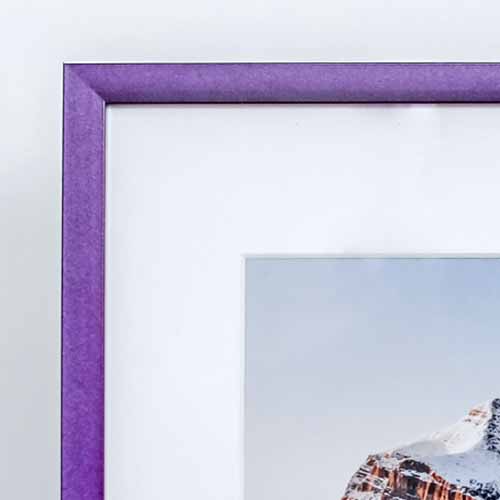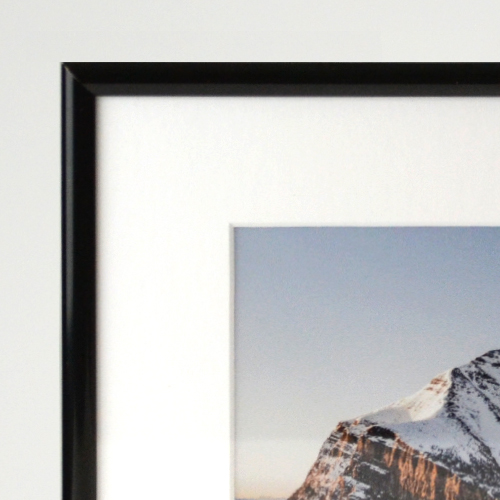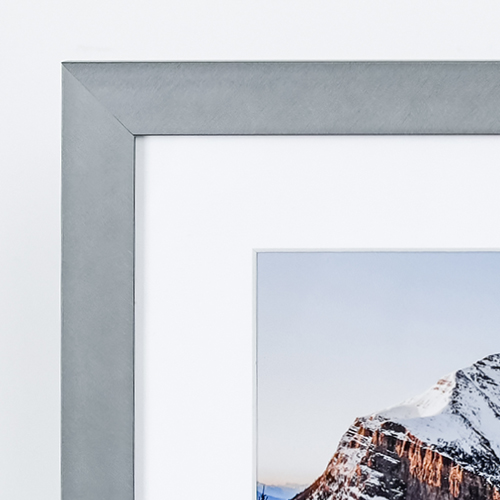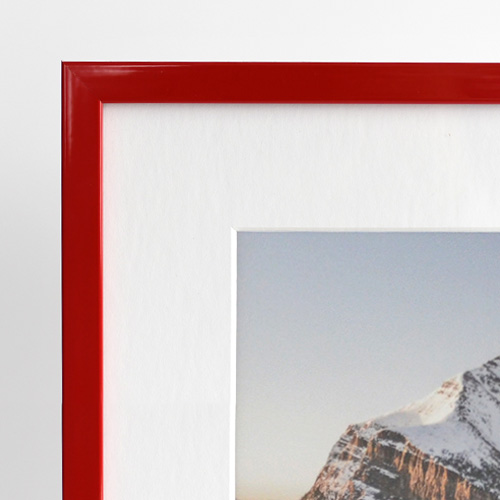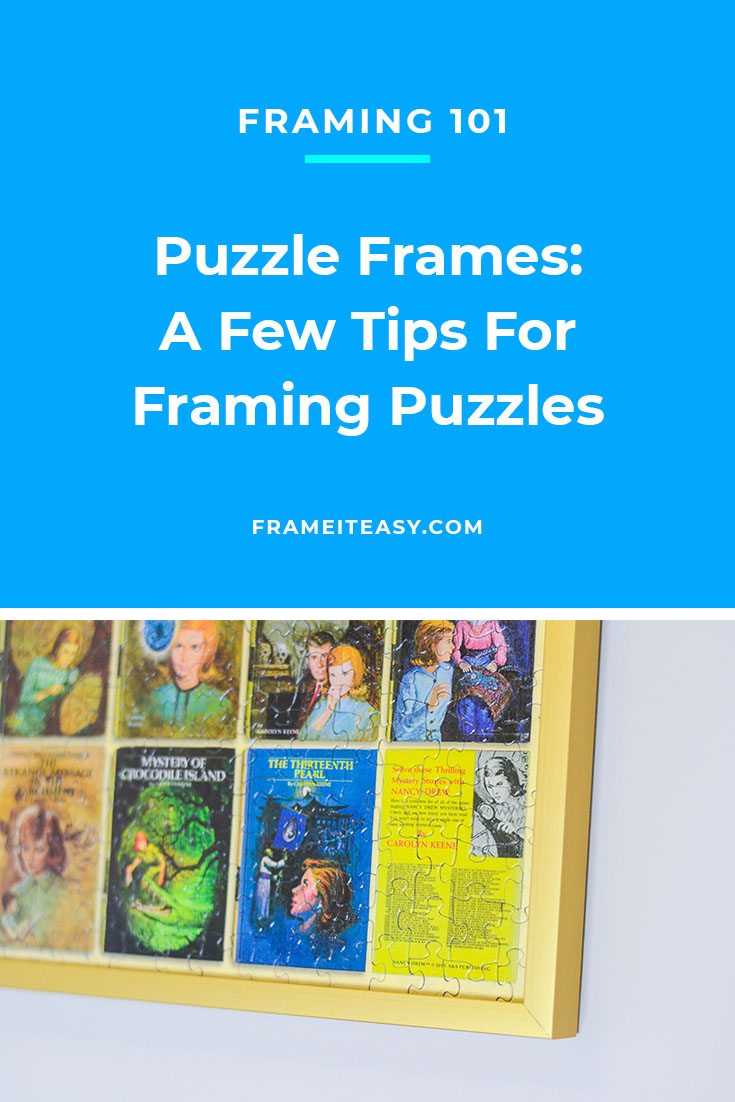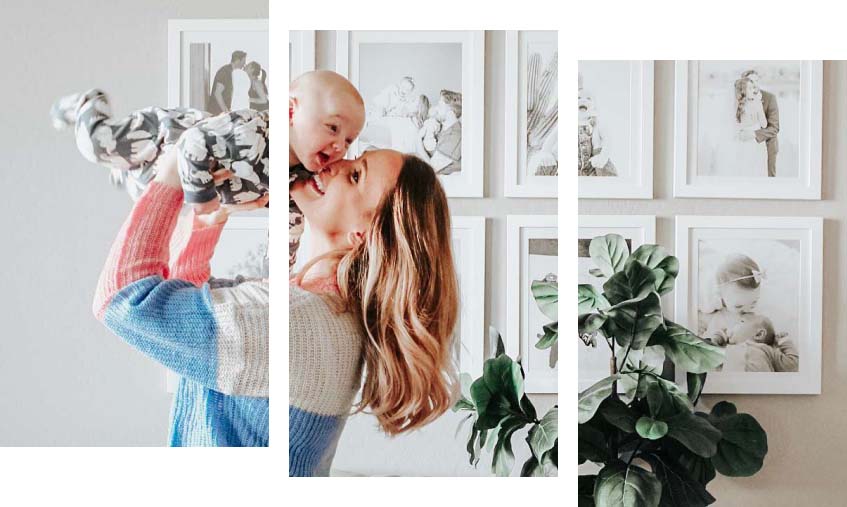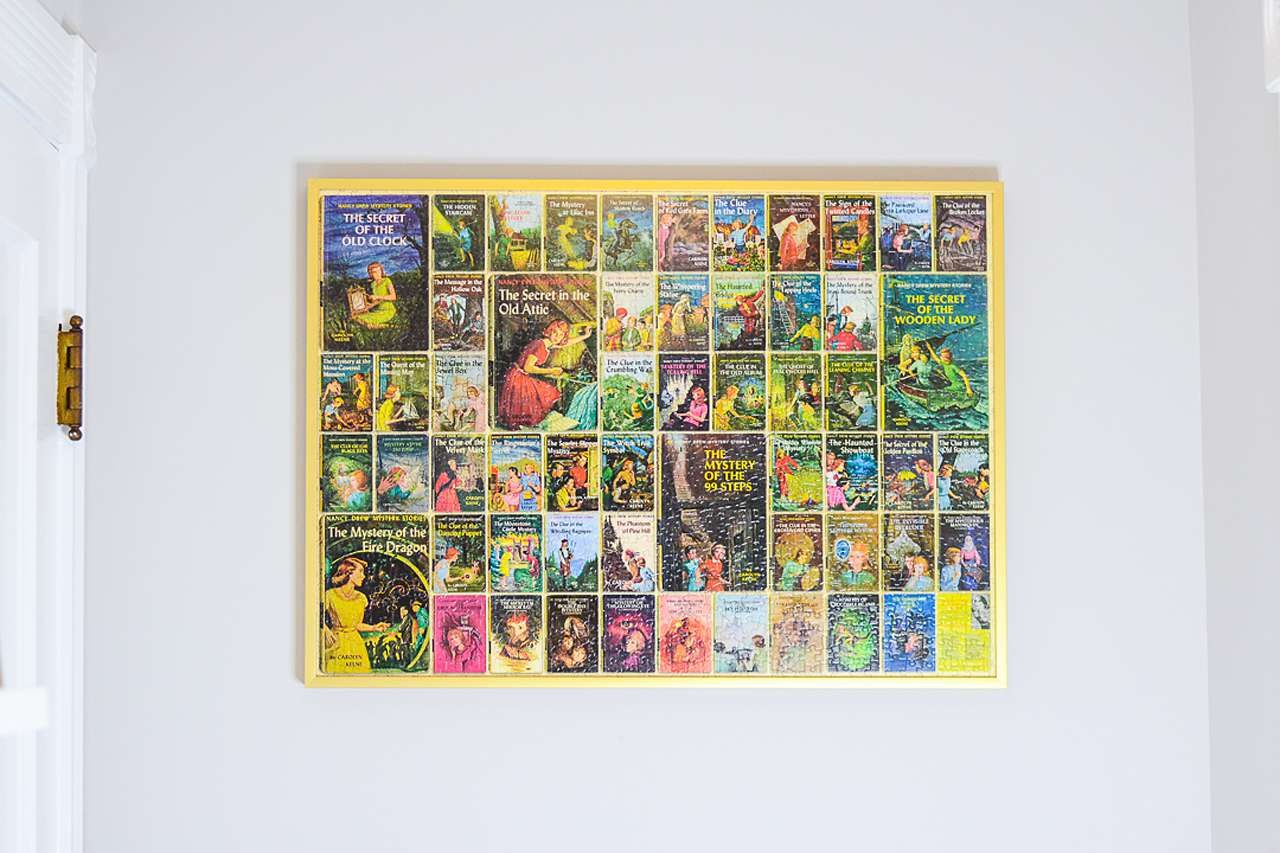
Assembling a picture can be just as fulfilling as taking, painting, or drawing one. And if you’re reading this, you might have just finished a puzzle of your favorite iconic person or place. You might also be in the market for puzzle frames, but are unsure where to start looking.
That’s okay! We’ll help you through all points of the puzzle framing process — from buying a puzzle to finding jigsaw puzzle frames to hanging the finished product on your wall, we’ve got the inside scoop.
Quick Video Overview
“I Don’t Have A Puzzle Yet. Where Can I Get One?”

Puzzles aren’t too difficult to find. Locally, you can check any hobby shop. Barnes and Noble is always another safe bet; they have everything from Disney-licensed to 1,000 piece puzzles of landmarks or cultural icons.
With this type of selection, you should be able to find something that interests you.
Still haven’t found something you like? Don’t worry — consider the following options, and hopefully, you can find what you’re looking for.
- Puzzle Warehouse is pretty all-encompassing and has items for all ages.
- Jigsaw Jungle is good for complex puzzles.
- Jigsaw Puzzle Maker allows you to upload an image to the site and receive it in puzzle form. It’s perfect if you want something that’s one-of-a-kind.
Check out our in-depth guide on where to buy jigsaw puzzles if you still haven’t found the perfect one!
Our Suggested Puzzle Frames
How Do I Buy A Frame For My Puzzle?
Luckily, buying a frame for a puzzle isn’t that much different than buying one for a regular photo. Measuring correctly is the key, though. If your numbers are correct, your puzzle should fit your frame perfectly!
Keep Your Puzzle’s Thickness In Mind
Puzzles are thicker than a normal photo or print. This means that it might exceed your framer’s thickness limitations. If this is the case, we recommend finding a shadow box frame, as it should be able to accommodate a puzzle of more considerable depth.
Some manufacturers, for example, make classic puzzles, which are wooden and about 1/4″ thick. Another site we found has a plywood option for puzzles, which measures at about 3mm thickness (just about 1/8″).
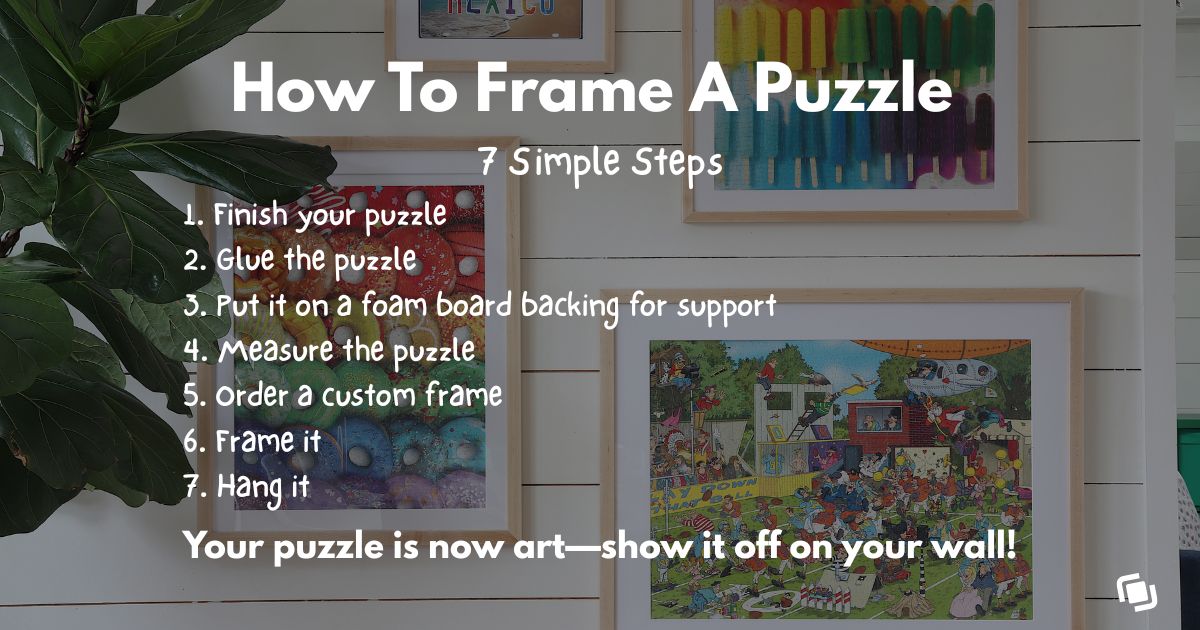
Modern puzzles are typically thinner than this and made of cardboard, but we still see thicker options. (Springbok, for example, claims that their products are 18% thicker than the average puzzle.)
We find, however, that the average depth for most puzzle products ranges from 1.2mm- 1.9mm. In inches, most puzzles probably sit around the 1/16th depth mark.
For context, the average paper thickness is about .0039″, which isn’t even 1mm.
While 1/16″- 1/8″ thickness should be well within most framers’ accommodation range, puzzle manufacturers seemingly link the depth of their product with its overall quality, so it wouldn’t be entirely uncommon to find thicker options.
So the best thing to do here is to check with the framer you intend to buy from and see what thickness they can accommodate, then determine if their product works for your puzzle needs.
Here at Frame It Easy, our metal frames can hold artwork up to 1/4″ thick, and our wood frames can hold artwork up to 1/8″ thick.
Pro Tip: Don’t Take The Measurements Listed on The Box At Face Value.
When you get your puzzle you notice it has its measurements listed on the box. “This is going to be easy,” you might think to yourself, “I’m going to order a frame in advance, and then slide the puzzle right into it!”
Despite this apparent time-saving convenience, it’s always a good idea to confirm as the measurements listed on boxes aren’t always accurate. Even if the numbers listed are only off by 1/4″, it could be the difference whether or not your frame can hold your puzzle.
It might seem like an extra step to measure, but it’s safer than receiving your frame, realizing it’s the wrong size and reordering. Save yourself from potentially wasting both time and money by taking a few extra moments to measure the puzzle’s final dimensions before ordering a frame.
“Okay, I Got My Frame! Now, How Do I Get My Puzzle Into It?”
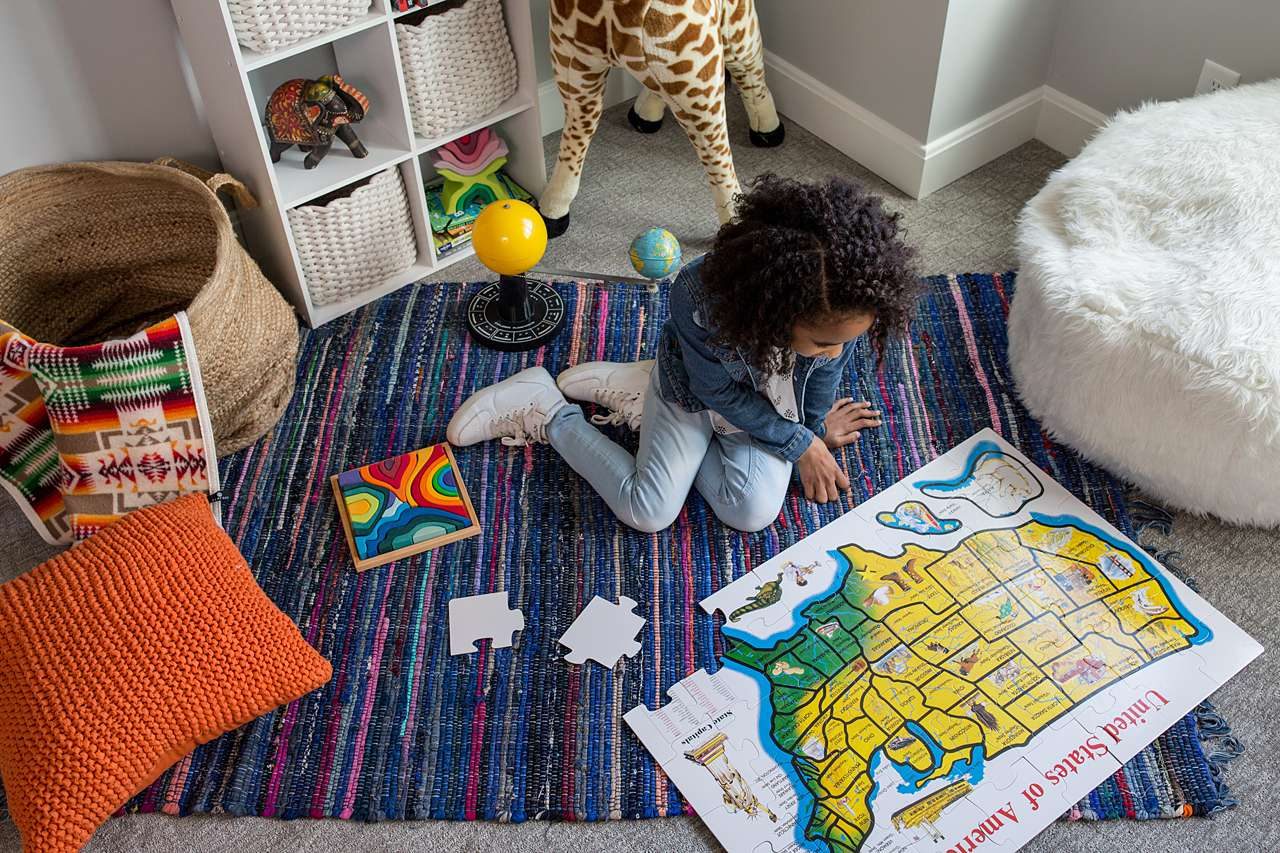
Framing a finished puzzle can have some challenges, which might include the following:
- How are you going to slide your puzzle into your frame without it coming apart?
- How will the puzzle stay together in the frame?
Don’t worry; we’ll cover both of these concerns. Hopefully, after reading this, you’ll be able to display your puzzle with ease!
Make Sure Your Puzzle is Flat
This is the step in puzzle framing that’s akin to plugging in your computer; it’s the most basic part of the process. But it’s still good to cover. Don’t skip this, or you might end up with a less than ideal display.
Sometimes, puzzles have the occasional stray piece that pops out of place. Pressing it back down is possible, but it may cause adjacent pieces that were previously flat to rise up. Talk about a never-ending cycle, right?
To help ensure your entire puzzle stays flat, use a rolling pin to level the entire thing. This is an easy yet effective way to flatten your puzzle evenly.
You’ll want to make sure everything is smooth before gluing it, too, which is another reason this is an important step. (It would be extra hard to adjust a stray piece if the whole puzzle has already been cemented together!)
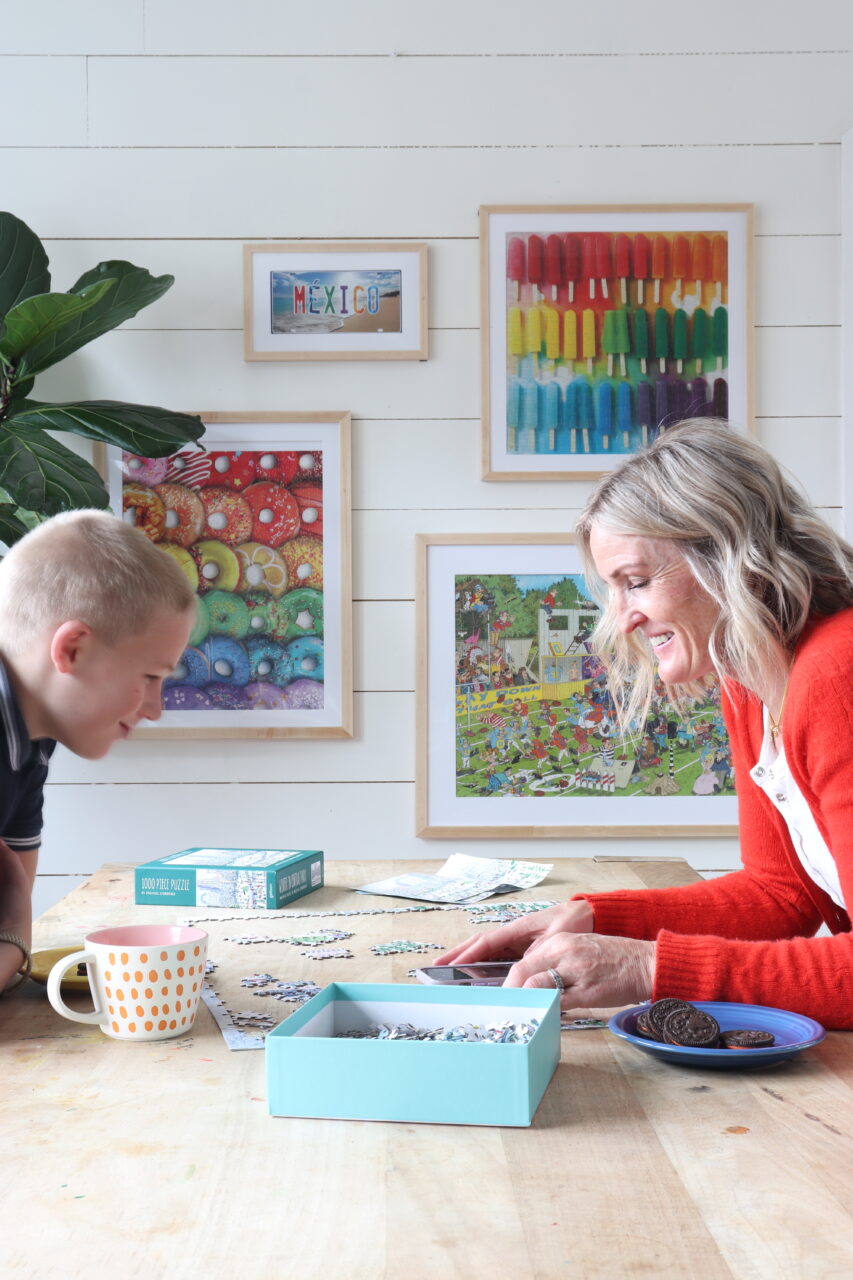
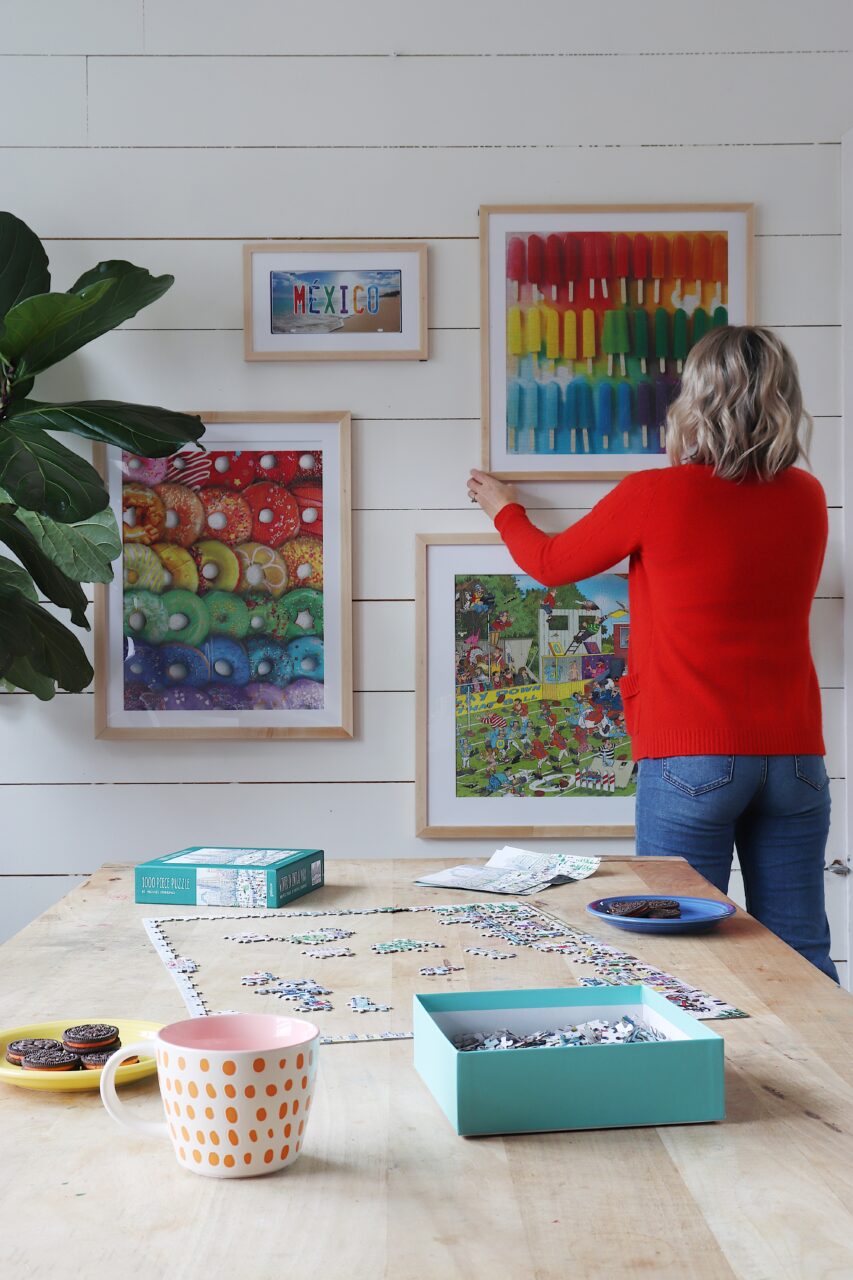
Use Adhesive To Bind Your Puzzle Together
Puzzles can fall apart. In a frame. On a table. Just about anywhere, in fact.
This doesn’t have to be the case, though. You can use a puzzle adhesive to ensure it stays fully intact on any surface.
In addition to the glue itself (which we’ll get into in a moment), you’ll also need something to spread it evenly. It can be as simple as a piece of cardboard, or even something like a business card or expired credit card will do. Basically, anything with a straight edge will help.
If you want to use brushes, the bristle-based variety can leave stroke marks. You’ll see plenty of tutorials using them, and the end product usually turns out fine if you’re patient. Still, foam brushes work better, and they are used just as often. Plus you don’t run the risk of leaving brush strokes.
There are also spray-based options for glue if you are concerned about evenly coating your finished piece. Just make sure to shake well before using, though!
No matter the type or method of adhesion, be sure to use a small to moderate amount of adhesive — and to not be too aggressive during the spreading process, as it could cause the puzzle to swell up. Worse, it could cause the individual pieces to fray and peel.
You’ll want to make sure you cover all the pieces, too.
What Type of Glue To Get
We mentioned this earlier, but too much glue can cause a puzzle to curl and warp. And it would certainly add, well, a wrinkle into your framing project.
This issue becomes more likely as the water content in glue increases. The more moisture in your adhesive, the easier it can cause a puzzle to peel and swell.
As such, it’d be best to use glue with low water content. Mod Podge works well, and it should allow you to move your puzzle with less concern of it breaking.
Mod Podge offers two different types of finishes, too: glossy and matte. You’ll be able to tell the difference by the packaging color; the glossy finish has a red container, and the matte finish has a yellow one.
There is an acid-free variety as well, and it comes in a blue container. This type has a matte finish, and it might be your best bet if you intend to display your puzzle long term.
Some puzzle companies also manufacture glue for their products. White Mountain Puzzles, for example, sells a glue on their “Accessories” page. If you buy a puzzle from them, it might be smart to buy the adhesive they offer, as they likely test it on their products.
We mentioned the Mod Podge brand specifically, but if there’s a puzzle manufacturer that also makes acid-free glue, that would be just as good. However, moisture and acid content — or lack thereof — are the two most important factors when deciding what adhesive is best.
What to do If Your Puzzle Curls At the Edges
You found your perfect puzzle, spent hours putting it together, measured for a frame, and sealed it using the correct glue — even one with a low water content. Everything should be great, right? Well, sometimes plans go awry.
Maybe you got a bit excited during the spreading process and put a little too much glue on it. Or maybe the weather has been extra humid. Either way, your puzzle’s edges have unfortunately curled.
It’s a bummer, but don’t fret! We can still try and save it!
If the edges of your puzzle curl, flip your puzzle over and apply another coat of glue to its back — hitting the areas where it’s peeling, in particular. (Make sure the adhesive on the front is no longer wet, though, before doing this!)
It might take some additional time, as you’ll have to wait for the glue on the back of the puzzle to dry, but it’ll be worth the wait. Everything should hopefully flatten out once the glue on the back dries. Make sure also you leave the puzzle backside up during this process.
What to Do if You Want To Avoid Glue
You could be a messy person. Things could get messier if you’re putting together a puzzle with your kids, too. Maybe you don’t want to change the finish of your puzzle, either, and you want it to be displayed as it was manufactured.
Glue wouldn’t be the best option here. Fortunately, there is another way to secure your puzzle.
This other method has a few different variations, however; it just depends whether you want to use Presto Peel and Stick Puzzle Saver or a basic roll of tape.
It’s up to you, though we would recommend the former, especially if the tape you’re using is acidic, which would end up degrading your display as time progressed. Specialty formulated items are usually the better option.
To start this process, however, you would need to apply the sticking material to the puzzle’s reverse side. This means you’d need to flip it over. Place a piece of poster board or cardboard on each side of your puzzle — a piece in front of and a piece behind. (You can also use binder clips on all sides to secure closed.)
Once you do this, flip the puzzle over and remove the back piece of poster board. The puzzle should still be together if you flipped it quickly and smoothly. (Enlist the help of a friend, if you can, especially for larger puzzles.)
Next, take the Presto Peel (or tape) and apply it thoroughly to the back of the puzzle. If you’re using tape, make sure it’s thick. You don’t want to be sitting there with thin strips of scotch tape making sure every last area of the puzzle is covered. You’d be there a while.
It’s also a good idea to have the pieces of tape to overlap each other. It will make things more secure. You should be able to drape your puzzle over a curved surface after doing this, and it won’t fall apart.
Just be sure to note that the tape will add some thickness to the overall dimensions of your puzzle, which goes back to making sure you measure correctly before framing.
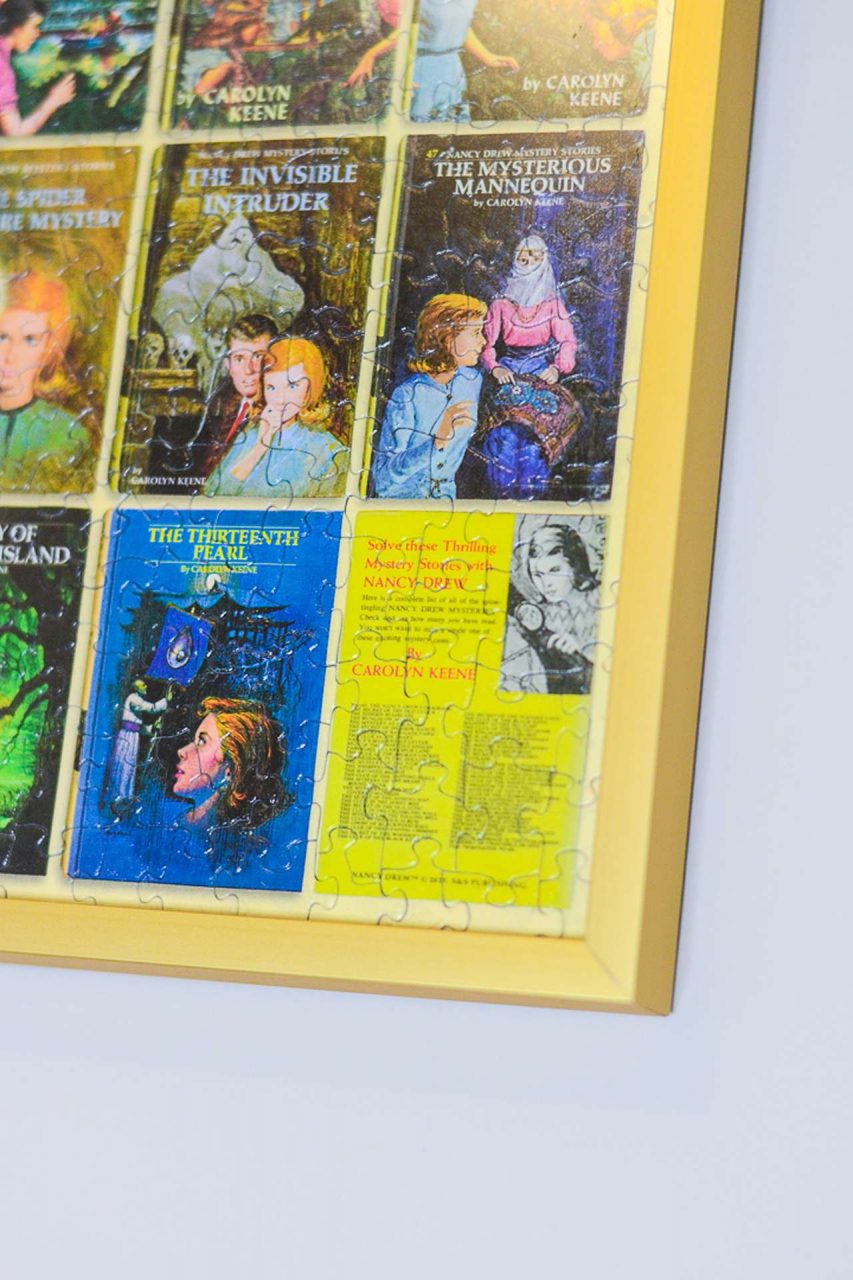
Mount It On Wax Paper
Even if it’s bound together, however, you might want to add additional support.
This is definitely possible by mounting your puzzle onto wax paper.
Mounting your puzzle on wax paper is more necessary if you glued it, though. If you used tape or Presto Peel, that, in effect, acts as the wax paper would, and you should be able to slide it right into the frame.
Pro tip: Like the tape method, though, you’ll want to make sure you account for any additional thickness it might add. Wax paper is thin, but any added depth should be accounted for. With the addition of the wax paper, as well as the glue required to mount it, it could end up thickening your puzzle more than you think. It’s better to be safe than unable to frame.
That said, once you’ve ensured everything will work, go ahead with the mounting. The same glue you used to bind the puzzle together should also work for this method, and it will keep everything as one cohesive unit. The process of transferring your puzzle into your frame shouldn’t be too different from that of a standard poster now.

In addition, there are acid-free options for wax paper, such as Reynolds Kitchens. Its primary use may not be for mounting puzzles, but it also won’t harm your puzzle long-term. While any other brand of wax paper works, too, it might not be best for archival purposes.
Can Or Should I Add A Matboard To My Puzzle Frame?
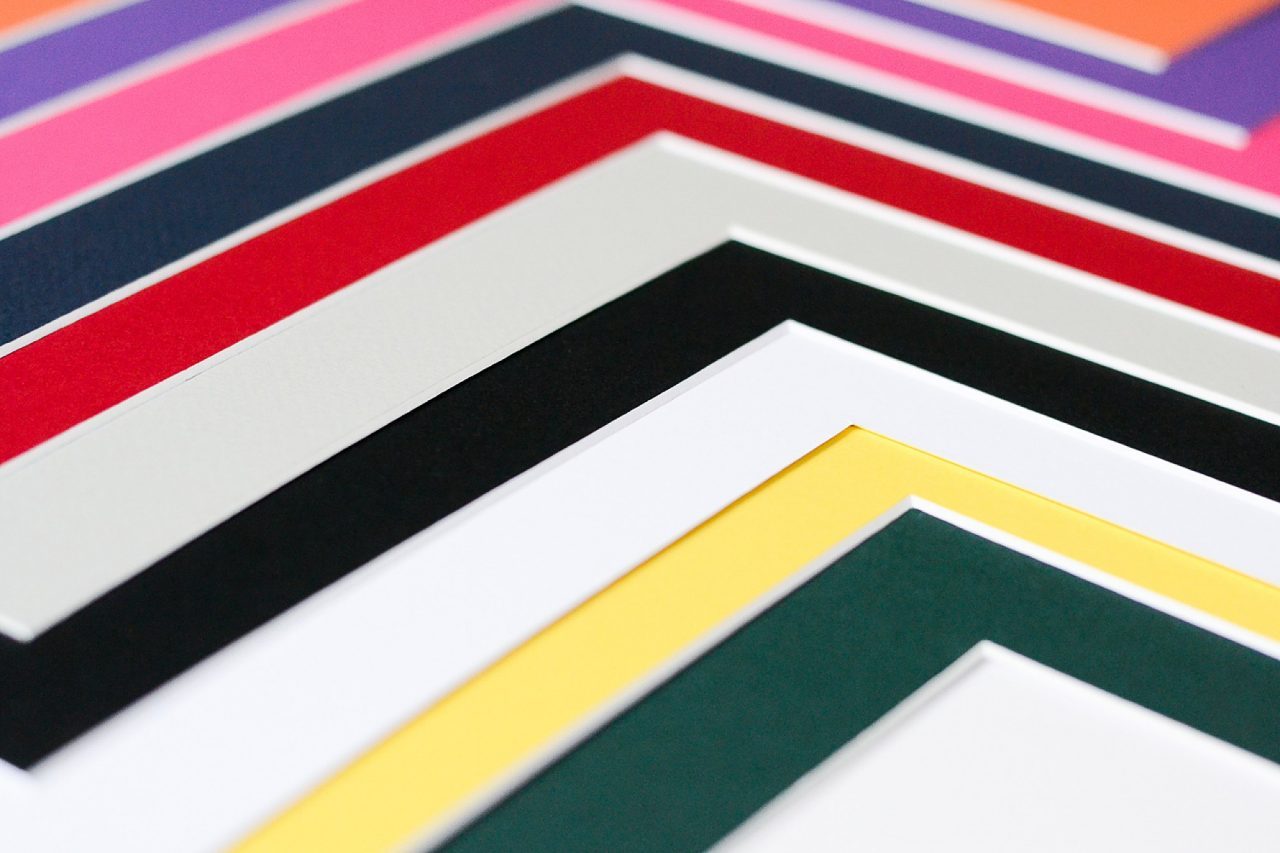
Whether or not you choose to add matting to your frame depends on a few factors:
- the size of your puzzle/frame
- the thickness of your puzzle
- the look you prefer
The most important factor to consider when considering adding matting to puzzle frames is the overall size — since matting adds additional inches to the outside dimensions of your frame, you’ll want to make sure the framer of your choice can accommodate matting of a particular size.
In addition to size, the thickness of your puzzle is a big factor when looking to add matting, as matting also takes up some space within your frame’s depth. A single mat can add about 1/8″ in depth, double matting up to 1/4″+.
The thickness and weight of your puzzle could also impact the effectiveness of the matting holding it in place. Since the opening of your matboard will be cut to display your puzzle, this means the frame itself might not be holding it in place.
Because of this, we recommend Framers Tape to secure your puzzle to the backing of your frame before overlaying the mat on top. It’s acid-free, and it won’t degrade your artwork. You could try Scotch Tape or some other non-specialty item, but it could be corrosive to your puzzle over time.
Here at Frame it Easy, in order to mat your art, the art size plus matting must be 32″ x 40″ or smaller. We also offer Framer’s Tape through our “Accessories” page.
If sizing isn’t a concern, then the choice to add matting really comes down to personal preference — would you prefer the look of a mat accenting your puzzle design, or would you prefer the puzzle to shine on its own?
Either works, so the choice is yours!
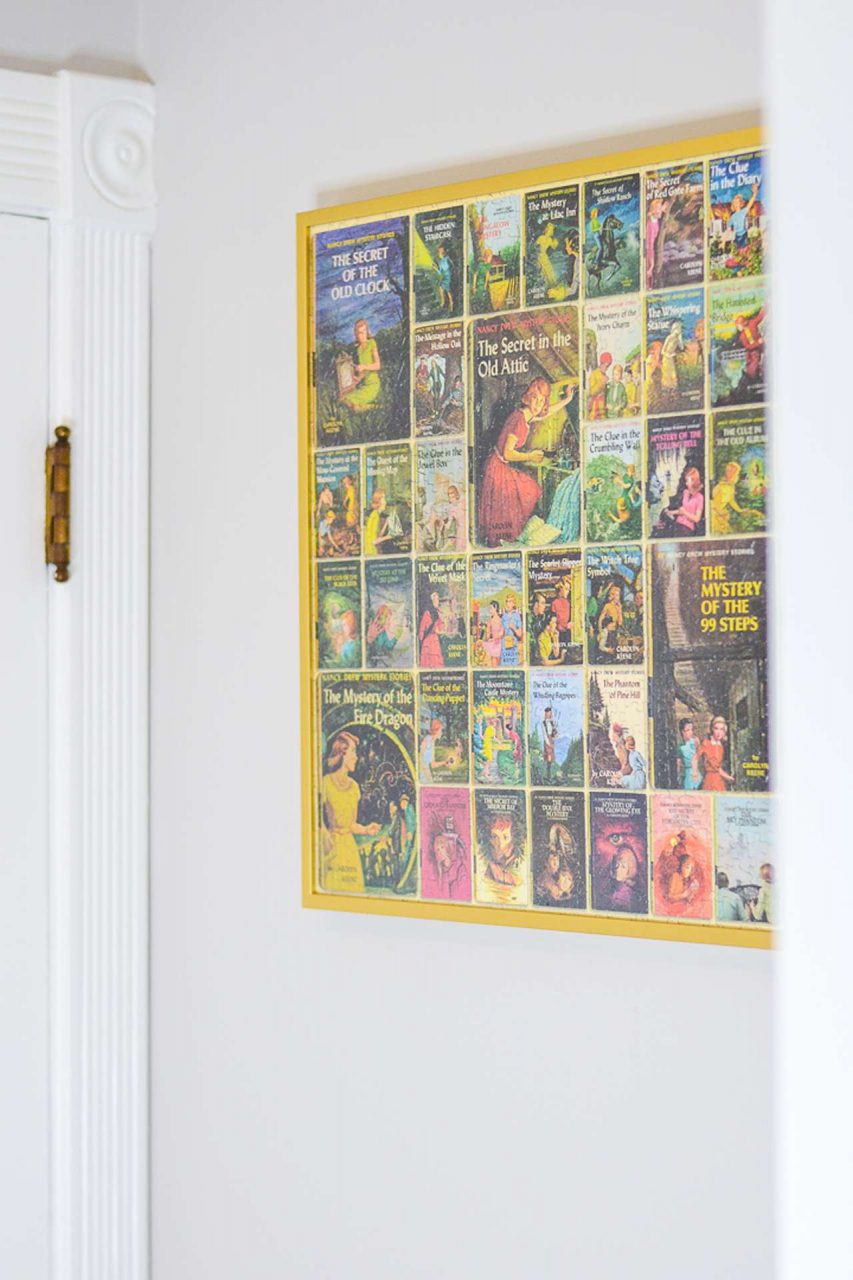
What’s the Best Way To Hang Puzzle Frames?
Hanging a puzzle frame is really no different than hanging any other type of photo or art frame, although the weight is probably a bit heftier than a printed photo.
As such, you might want to consider adding some extra support by way of security hardware or an additional hook.
Our tips for hanging picture frames is a great resource!
Final Thoughts
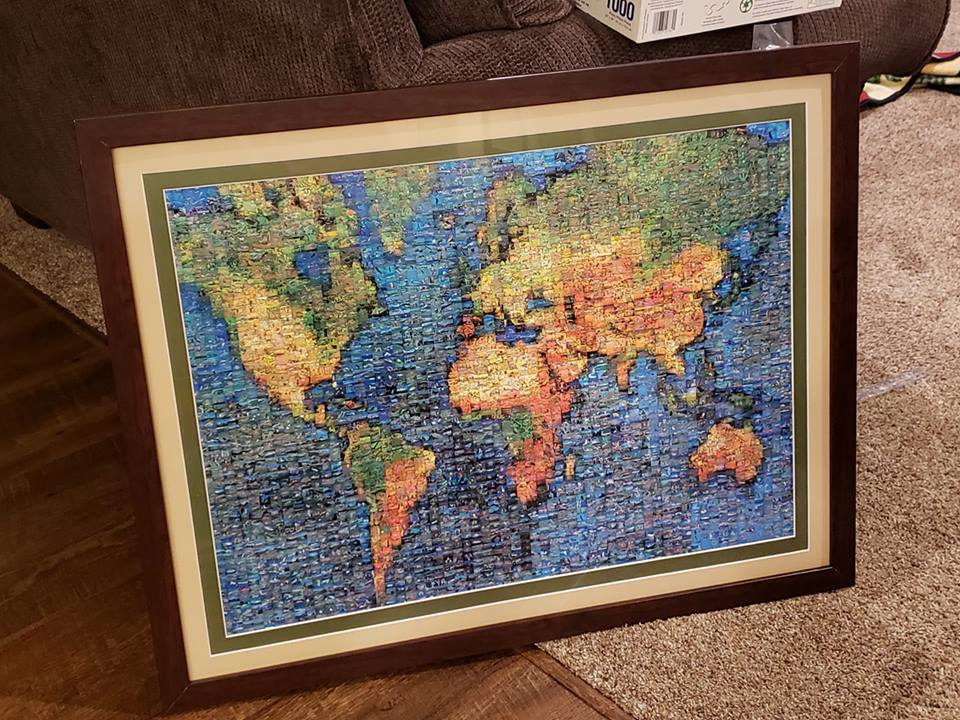
Puzzles are not only a cool display piece, but they’re also a testament to hours of time and dedication. Framing them is an awesome way to showcase your efforts of sifting through and assembling hundreds of little pieces.
Indeed, puzzles make unique additions to your home decor.
Simply remember these few tips before framing your puzzle, and you should be all set:
- Use a rolling pin to flatten all the pieces out.
- Mount your puzzle on wax paper for added stability.
- Choose a puzzle-saving glue with a low water content.
- Always use acid-free materials.
- Double check all measurements before deciding which frame to buy.
BONUS: 10 Cool Places to Buy Puzzles
Signup for our email list and get a free guide on 10 great online stores to buy puzzles to enjoy!

